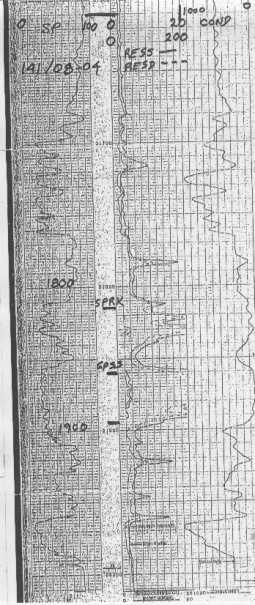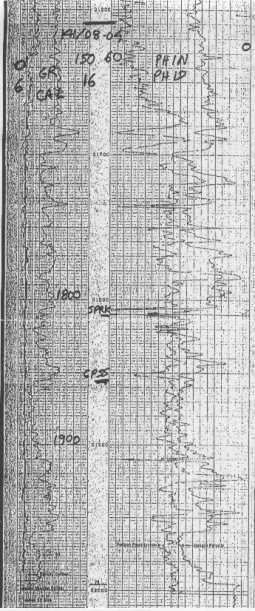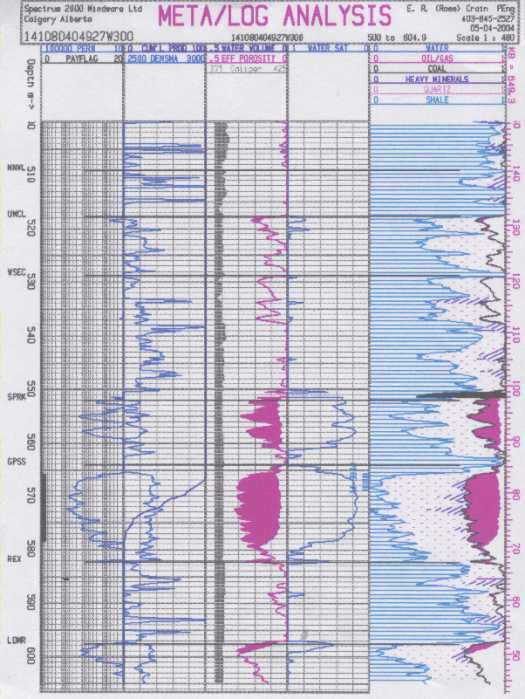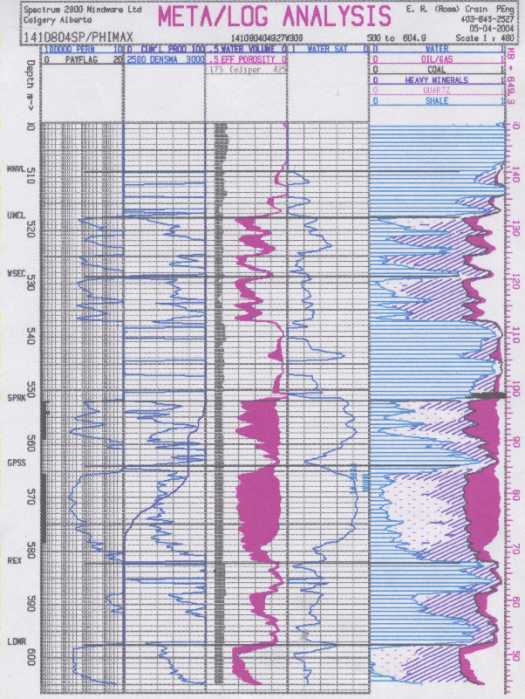|
 HEAVY OIL IN
Shaly Sand
(Ancient Logs)
HEAVY OIL IN
Shaly Sand
(Ancient Logs)
One way to test the techniques for ancient logs is to run the
math on a modern log suite and compare results to the same logs
after eliminating all the curves that would not have been available
in ancient times. In this well, we have conventional induction-electrical
and density-neutron logs in a heavy oil well. By assuming that
the induction resistivity is similar to a 64 inch normal and that
the only shale indicator is the SP, we can compute results
simulating an ancient log suite using the PHIMAX method. This "ancient
log" result can then be compared with the modern version in the identical rock/fluid
sequence using standard log analysis models. The technique is
relatively straight forward in sand shale sequences where
porosity is often proportional to (1 - Vsh), but may not be
useful in carbonates, unless good core data is available.
Watch for the possibility of ancient gamma ray and neutron
logs run through casing -- they can be very helpful in
guiding the shale volume and porosity calculations.
Once you have satisfied yourself that your ancient log
technique works reasonably well in a modern well, you can
embark on a field wide search for bypassed pay or poor
quality completions.
Here is an example: top illustration shows raw log data,
middle shows results using modern porosity logs, bottom
shows results using resistivity, SP, and PHIMAX only.
 
IES and CNL FDC for heavy oil case history 1978

Conventional log analysis using GR, CNL, and
FDC. Pick water contact in GP sandstone. Is there a contact in
the Sparky sandstone? Compare your answer to resistivity log.

Same well computed with IES, SP, and PHIMAX
= 0.34. Compare to results in previous illustration.
Although
the induction resistivity is focused better than a 64 inch normal,
this example shows that the PHIMAX method is quite suitable in
a shaly sand sequence.
|

